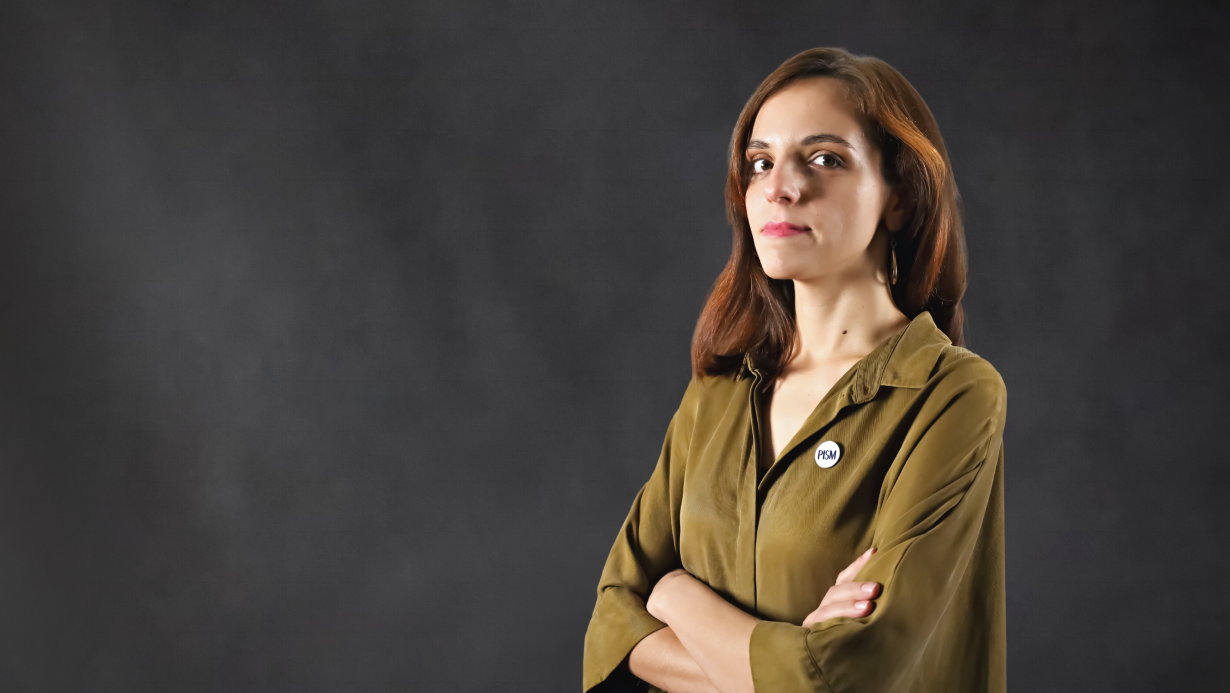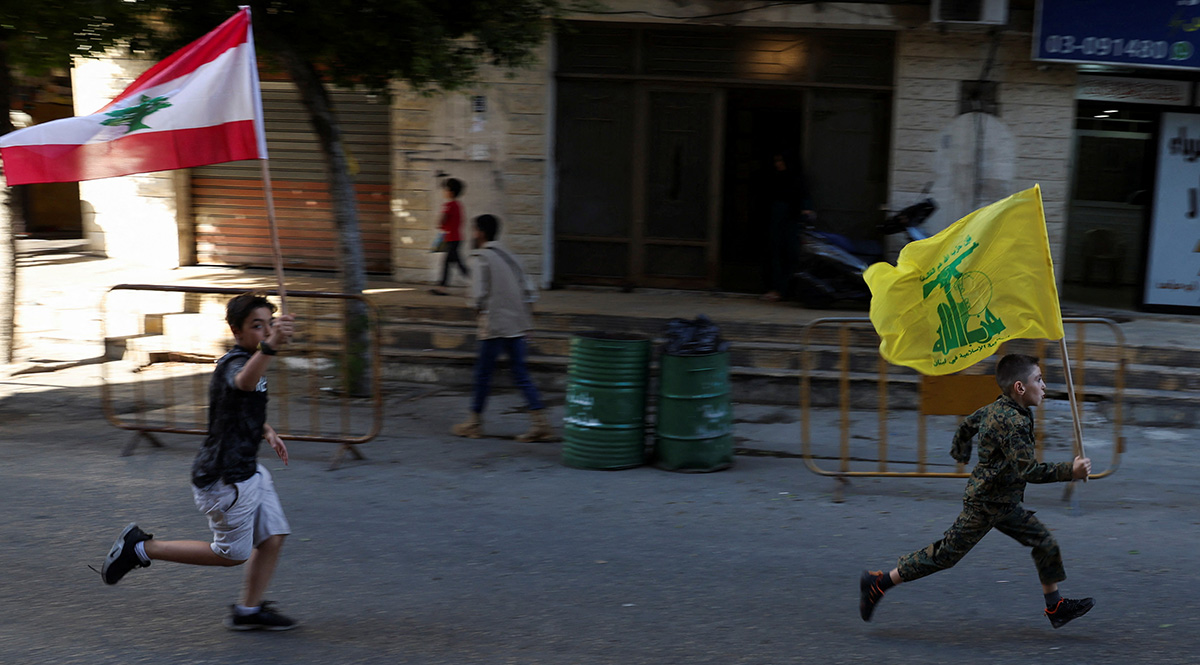Likelihood of Escalation in Lebanon Increasing
In recent weeks, Israel and Hezbollah have intensified mutual attacks, and the Israeli military has conducted exercises simulating an armed conflict with the organisation. While the main goal of these exercises remains deterrence, the stance of the Israeli public and army for action, as well as threats by Hezbollah’s leader, point to the growing likelihood of a full-scale war. Given the presence of Polish troops in UNIFIL and the tenure of Polish citizen Joanna Wronecka as UN Special Coordinator for Lebanon, Poland could become involved in de-escalation efforts led by the U.S. and France.
 Ayal Margolin / Reuters / Forum
Ayal Margolin / Reuters / Forum
What is the current situation on the Lebanese-Israeli border?
The Hamas attack on Israel on 7 October and Israel’s response in Gaza prompted Hezbollah to escalate, resulting in the evacuation and displacement of about 160,000 residents on both sides of the border. Since then, around 440 people (including nearly 360 militants) have been killed in Lebanon and 18 soldiers and 10 civilians in Israel. Since the beginning of the Gaza war, Israel and Hezbollah have carried out a total of more than 7,400 attacks (of which Israel has carried out the majority, about 5,800). The greatest intensification of operations occurred in late May and early June. Hezbollah attacks increasingly bypassed the Iron Dome air defences (including with the use of drones), leading to numerous wildfires and serious damage to Israeli military bases. As a result, the Israeli army stepped up attacks on Hezbollah commanders. Following the killing of Taleb Adbullah, one of Hezbollah’s top commanders, the organisation fired more than 215 rockets into Israel. On 18 June, Hezbollah released footage from above Haifa, captured by one of its drones, to highlight its ability to observe Israeli cities and strategic infrastructure (the footage focused on ports and the airport). In addition to airstrikes on border areas, Israel responded with an attack on Saida, inhabited by nearly 300,000 people, as well as a test of a new ballistic missile (24 June) and numerous overflights of Lebanese territory (30 June).
What do the statements of Hezbollah representatives and Israeli authorities indicate?
The June speech by Hasan Nasrallah, the organisation’s secretary-general, broke from his earlier de-escalation rhetoric. Indeed, it was the first one since 7 October in which he declared Hezbollah’s readiness for a full-scale conflict with Israel. He also threatened Cyprus with attacks if it made its territory available to the Israeli air force for launching airstrikes on Lebanon. At the same time, Israeli Prime Minister Benjamin Netanyahu indicated that further operations in the Gaza Strip no longer required as much involvement of troops, allowing operations against Hezbollah to intensify. This is consistent with the position of the majority of Israeli Jews—in a June survey, 62% of them supported the idea of a full-scale strike against the organization. Responding to these demands, and possibly to limit Israeli criticism of its actions in Gaza, Israel has increased troop deployment to the north and now has about 150,000 soldiers there. Israel’s priority remains changing the status quo on the border to create a buffer zone where Hezbollah will not be allowed to operate, as envisioned in UNSCR 1701 of 2006. Hezbollah, in turn, wants to use Israel’s involvement in Gaza to increase the cost of its presence in the disputed border territories, while avoiding the spread of war into Lebanese territory.
What is Hezbollah’s military potential?
Hezbollah is considered one of the strongest paramilitary organisations in the world, surpassing the Lebanese army in strength and about ten times more powerful than Hamas. Initially it was an organisation dependent on Iranian support, but today its relationship with the Islamic Republic is considered a partnership, while their goals remain consistent. This change was influenced, first, by the outcome of the 2006 war with Israel in which Hezbollah prevented Israel from achieving its military objectives. Second, Hezbollah’s involvement in Syria allowed it to expand its arsenal, improve its combat capabilities, and gave it access to additional sources of income, such as arms smuggling and drug trafficking. It is estimated that Hezbollah possesses between 120,000 and 200,000 rockets (more than a dozen times more than during the 2006 war) and 2,000 drones. It has about 30,000 active fighters and 20,000 reservists (according to Nasrallah’s speeches, 100,000 people are fighting for Hezbollah). This capacity and the still unfinished operation in Gaza are influencing the opinions of Israeli experts, who are critical of a potential invasion of Lebanon.
What is the attitude of Lebanese society and authorities toward a possible escalation?
Most Lebanese government officials stress that Hezbollah has unilaterally decided to open a “solidarity front” and point to the need to find a diplomatic solution. Hezbollah’s actions are also criticised by its Christian political ally, the Free Patriotic Movement party (the second-largest party in the Lebanese parliament). A similar position is taken by Lebanese citizens (especially Christians), who oppose a shift in the war between Israel and Hamas in Gaza to their country’s territory. Hezbollah is keen to maintain its role in the Lebanese political system, public sentiment and the priorities of its coalition partners are therefore among the elements preventing it from further escalation. At the same time, Lebanese Prime Minister Nadjib Mikati’s rhetoric is consistent with Hezbollah’s position. He claims that the organisation’s actions can be averted by a ceasefire between Israel and Hamas, arguing that the situation in southern Lebanon is primarily Israel’s responsibility. During a recent visit to the south of the country, however, he stressed the need to implement UNSCR 1701 and strengthen the Lebanese army.
How is the international de-escalation effort going?
The main actors in this regard are the U.S. and France, with the latter also supporting the internal political processes in Lebanon (e.g., breaking the deadlock over the election of the president). The U.S. goal is to work out a formula in which the Hezbollah militias agree to withdraw from the border and abandon the use of Radwan special forces against Israel. The two countries’ envoys, Amos Hochstein and Jean-Yves Le Drian, regularly visit Lebanon and Israel, the last time being in June and late May, respectively. At the time, Hochstein conveyed to Hezbollah that it would be a mistake to assume that the U.S. is capable of stopping Israel from starting a war. In June, Israel’s Defence Minister Joav Gallant visited the United States and in his statement after the visit and Hezbollah members’ comments to Lebanese media indicate that there is a willingness on both sides to de-escalate. However, the ongoing war in Gaza and the unstable situation in Lebanon continue to increase the risk of the sides crossing the threshold of war. Given that Lebanon has become an important reference point for Poland’s activity in international organisations, the Polish authorities could increase support for the Lebanese army in its efforts to implement Resolution 1701. They could also engage in mediation between Lebanese groups through Wronecka, whose activity is positively perceived in Lebanon, and support French efforts to stabilise the country’s internal situation.





